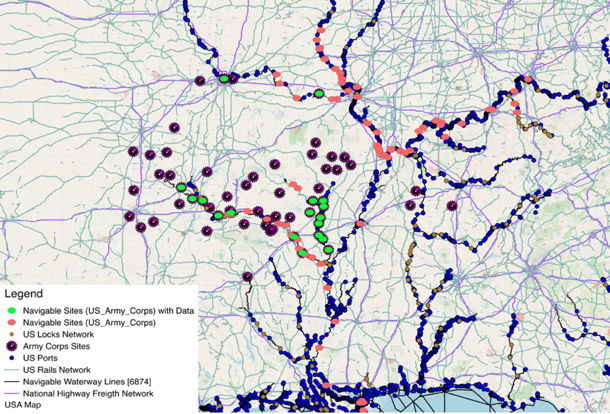
A team of University of Arkansas industrial engineering researchers has developed a tool to help public and private sector leaders optimize freight movement across different modes of transportation.
The customizable tool integrates a variety of data sources related to the design and operation of ports, locks, dams and ground transportation, and spatiotemporal models, to help decision-makers understand how best to transport freight across the United States.
The team was led by Haitao Liao, professor of industrial engineering and the John and Mary Lib White Endowed Systems Integration Chair, and was funded by a $200,000 grant from the National Science Foundation's EAGER program. EAGER stands for "EArly-concept Grants for Exploratory Research."
Heather Nachtmann served as co-principal investigator. Nachtmann is a professor of industrial engineering and senior associate vice chancellor for research and innovation at the University of Arkansas. Industrial engineering doctoral students Basem Alkhaleel and Jose Azucena also contributed to the project.
Liao said the tool's multifaceted approach is critical to support modern planning needs as well as disaster relief and recovery.
"Access to data on the design and operation of interdependent critical infrastructures, known as ICIs, is now recognized as essential for fostering new data analytics, design and decision-support tools," he said. "This project has created and made available synthetic and simulated data on ICIs by developing new data creation techniques and model-based approaches to simulating ICIs and human cognition and behavior with ICIs."
The study also has broad implications for the nations' commodity supply chains. Inland waterways in the United States are used to transport approximately 20 percent of America's coal, 22 percent of U.S. petroleum products, and 60 percent of farm exports.
The study, titled Data Simulation to Support Interdependence Modeling in Emergency Response and Multimodal Transportation Networks, took place as a project of the Mack-Blackwell Transportation Center.
Follow this link to apply to use the tool (and the user manual): martrec.uark.edu/data.
Topics
Contacts
Tamara Ellenbecker, media specialist
Department of Industrial Engineering
479-575-3157, tellenb@uark.edu
Nick DeMoss, director of communications
College of Engineering
479-575-5697, ndemoss@uark.edu